


Robin was introduced to the Society as a collector of battle fields and has lectured
several times to more than a single branch and more recently on ZOOM.
This is my 2022 Xmas military history newsletter. Much less travel these days and visits to battlefields are few and far between. But I have been twice to the Spion Kop area this year but that’s pretty well it. Spion Kop has a road up to the summit. There are wonderful views over the surrounding countryside from there. In good weather but not if it rains. British soldiers and Boer commando members fought a fierce battle on the summit on 24 January 1900. Spion Kop is always the place that visitors want to go to above all the others, not unnaturally. However, most people need reminding that the battle on that day was the last day of eight days of fierce fighting in the area. It was not just the two sides fighting for possession of a largely useless piece of real estate, a barren waterless hilltop.
There is a great deal to be seen all around Spion Kop which is but one of a number of battles which collectively constitute the early stages of the battles for the Tugela Heights. Spion Kop was an exercise in futility for both sides. It was essentially a strategic battle, the British trying to find out if there was a way over the range of hills and the Boers defending their Tugela line. There were no winners, although certainly in a number of ways the Boers came off the better. General Redvers Buller and his men reached their objective, the town of Ladysmith, just over a month later. There was a lot of heavy fighting all along the Tugela Heights. After the undoubted failures to break through at Spionkop and then at Vallkrantz further east during that month, finally the Boer line was breached at Pieters Hill. Lots and lots of interesting sites with monuments and, sadly, grave sites are scattered over the hills.
As a historian, rather than a battlefield guide, I have to give the strategic view. It is my decided opinion that what happened before a battle, and what happened after, are much more important and interesting than the battle itself. There are highly detailed accounts of the Battle of Spionkop in both of the major histories, The History of the War in South Africa 1899-1902 by Major-General Sir Frederick Maurice and the semi-official The Times History of the War in South Africa 1899-1902 by Leo Amery. And, of course, Deneys Reitz describes his experiences there in his book Commando which every South African ought to have read. Barely 18 years old, was he lucky he didn’t come to any harm, unlike many of his fellow Pretorians! Books on Spionkop are legion in both English and Afrikaans but very few give a proper strategic account to put the battle into perspective. A friend, Robert Davidson is, I believe, busy writing such an account based on his years of tramping around the hills of the area and lots of research. He wrote two articles about battles around Spionkop for the SA Military History Journal in June 2020 and June 2021 which contained much that is new. A new book with even more will be welcome.
There exists a quite short and concise account under the heading of Thorneycroft’s Mounted Rifles in the public domain.It’s a good way to get started on the subject and as an accompaniment to a site visit. Here it is:
This corps, to become famous in the course of the war, was raised at Pietermaritzburg by Major A W Thorneycroft of the Royal Scots Fusiliers. Prior to the battle of Colenso, 15th December 1899, they did a good deal of patrol work, and thus had some opportunities of getting into shape. From the start they were, apart from a splendid leader, well supplied with good officers. By the middle of November the corps had reached a strength of 500. Their first engagement was outside Mooi River on 22nd November, under Major General Barton, when he was endeavouring to clear the enemy from the country between himself and Major-General Hildyard, who, for four days in November 1899, was practically shut up in Estcourt. The corps had two wounded. At Colenso the regiment was heavily engaged, like the rest of Lord Dundonald's Brigade of Irregulars. The regiment was on the extreme right of the British line, and made a fine effort to capture Hlangwane — indeed some of those who were present expressed the opinion that if any substantial support had been sent them, they would have succeeded in their attempt. General Barton explained to the War Commission that, to his regret, this support could not be afforded (see South African Light Horse). The regiment lost 1 officer, Lieutenant C M Jenkins, and 4 men killed, and 3 officers, Lieutenants W Otto, Ponsonby, and Holford (19th Hussars, attached), and 27 men wounded.
In the movement by which General Buller attempted to turn the Boer right Thorneycroft's Mounted Infantry were again with Lord Dundonald. On the 18th and 20th of January 1900 the regiment had not so conspicuous a place as the composite regiment of Mounted Infantry or the South African Light Horse. When Bastion Hill was seized the regiment was on Lord Dundonald's right, keeping in touch with the left of Hildyard's infantry. On the 22nd it was determined that Spion Kop, the great hill, at the angle where the Boer line turned back from the river, must be taken. To allow of the ground being examined the operation was put off till the evening of the 23rd. At first it was arranged to ascend by the south-east face, next to Trichard's Drift; but, near dusk on the 23rd, General Woodgate, who was in command of the assaulting force, decided to go by the south-west face. In the brief twilight Colonel Thorneycroft made a hasty reconnaissance, and sketched the outstanding features, trees, kraals, etc. The force employed was the 2nd Battalion Royal Lancaster Regiment, the 2nd Battalion Lancashire Fusiliers, two companies of the 1st Battalion South Lancashire Regiment, and Thorneycroft's Mounted Infantry, whose strength was 18 officers and 180 men, all dismounted for the task in hand. About 11 pm on the 23rd the force moved off, and after the first half-mile Thorneycroft and his men headed the column, the Colonel himself, with Lieutenants Farquhar and Gordon Forbes and Privates Shaw and Macadam, acting as guides. The most perfect silence was maintained. Halts were frequently made in the ascent, which was so difficult that at times the hands had to be used. During the ascent the column opened out into lines, the order being — Thorneycroft's Mounted Infantry, Lancashire Fusiliers, Royal Lancaster Regiment, and two companies South Lancashire Regiment. At 4 am the last slope was breasted, a Boer sentry challenged, and instantly the picket fired. The leading lines lay down until it was thought the magazines were emptied, then rushed forward with the bayonet; but the picket fled, and the summit was occupied. Steps were immediately taken to make defensive works. In his report, dated 26th January 1900, Spion Kop Despatches, p 28, Colonel Thorneycroft said: "There was a mist on the hill, and in the darkness and mist it was difficult to get the exact crest line for a good field of fire, and the boulders made it difficult to dig, but we made a rough trench and breastwork". About 4.30 some Boers opened fire; our men replied — then the firing died out for a time. It was found that the trench did not command the ascent - and men were pushed forward to line the crest. The enemy recommenced firing now more heavily. Defensive works were about to be commenced on the crest, about 180 yards in front of the trench, when the mist lifted — this was between 7.30 and 8. The Boers' rifle-fire now became extremely severe, while 3 guns and a Maxim-Nordenfeldt pitched shells on to the plateau with great accuracy from a range of 3000 yards. It was also now discovered that the trench which had been cut was enfiladed at easy range by trenches or natural caves occupied by the enemy. Most of the advanced parties, being also enfiladed, were completely wiped out, but these were constantly reinforced or replaced. Thorneycroft's Mounted Infantry had been placed at the left of the trench with parties in advance. When visiting this position about 8 am General Woodgate was mortally wounded. Colonel Blomfield of the Lancashire Fusiliers took command, but he too was wounded. Early in the forenoon, probably about 10 am, Colonel Thorneycroft received a message that he was in command of the hill. The messenger was killed as he delivered the order. Over and over again the advance parties were entirely destroyed. No help could be sent to the wounded. Officers and men who were not killed outright kept on firing as long as they could hold a rifle. In his report Colonel Thorneycroft says: "The Boers closed in on the right and centre. Some men of mixed regiments at right end of trench got up and put up their hands; three or four Boers came out and signalled their comrades to advance. I was the only officer in the trench on the left, and I got up and shouted to the leader of the Boers that I was the commandant and that there was no surrender. In order not to get mixed up in any discussion I called on all men to follow me, and retired to some rocks farther back. The Boers opened a heavy fire on us. On reaching the rocks I saw a company of the Middlesex Regiment advancing. I collected them up to the rocks, and ordered all to advance again. This the men did, and we reoccupied the trench and crestline in front. As the companies of the Middlesex arrived I pushed them on to reinforce, and was able to hold the whole line again. The men on the left of our defence, who were detached at some distance from the trench, had held their ground. The Imperial Light Infantry reinforced this part. The Boers then made a desperate endeavour to shell us out of the position, and the fire caused many casualties. The Scottish Rifles came up, and I pushed them up to the right and left flanks as they arrived".
After speaking of the difficulties arising from the uncertainty as to who was in command on the hill, Colonel Thorneycroft goes on to say: "The heavy fire continued, and the Boers brought a gun and Maxim-Nordenfeldt to bear on us from the east, thus sweeping the plateau from the east, north, and northwest, and enfilading our trenches. The men held on all along the line, notwithstanding the terrific fire which was brought to bear on them as the enemy's guns (which now numbered 5 and 2 Nordenfeldts) were absolutely unmolested. When night began to close in I determined to take some steps, and a consultation was held. The officer commanding Scottish Rifles and Colonel Crofton were both of opinion that the hill was untenable. I entirely agreed with their view, and so I gave the order for the troops to withdraw on to the neck and ridge where the hospital was. It was now quite dark, and we went out to warn all to come in. The enemy still kept up a dropping fire. The regiments formed up near the neck and marched off in formation, the Scottish Rifles forming the rear-guard. I was obliged, owing to want of bearers, to leave a large number of wounded on the field. In forming my decision as to retirement I was influenced by the following — 1. The superiority of the Boer artillery, inasmuch as their guns were placed in such positions as to prevent our artillery-fire being brought to bear on them from the lower slopes near camp, or indeed from any other place. 2. By my not knowing what steps were being taken to supply me in the morning with guns other than the mountain-battery, which, in my opinion, could not have lived under the long-range fire of the Boer artillery and their close-range rifle-fire. 3. By the total absence of water and provisions. 4. By the difficulty of entrenching on the top of the hill, to make trench in any way cover from infantry fire with the few spades at my disposal, the ground being so full of rocks. 5. Finally, I did not see how the hill could be held unless the Boer artillery was silenced, and this was impossible. Lieutenant Winston Churchill arrived when the troops had been marched off".
It may be noted that the shells which did greatest damage to the troops on Spion Kop were those fired from the 15-pounders captured by the Boers at Colenso; and we had thus convincing proof of the efficiency of our own 'time shrapnel'.
It is impossible to do justice to the scene on the hill throughout the day, or to the splendid behaviour of the great mass of the troops. There have been several detailed accounts of the heroic combat published, but none is more realistic than that of Lieutenant L Oppenheim, of Thorneycroft's Mounted Infantry, published in the 'Nineteenth Century' of 1901. Mr Oppenheim has there given a contribution to the history of the war which is invaluable. Colonel Thorneycroft says little about his own doings, so a quotation from Mr Oppenheim is not out of place. "It was one o'clock. A soldier near to Colonel Thorneycroft in the angle of the entrenchment drew his attention to some movement which was going on on the right of the entrenchment, some fifty yards away. The stretch of wall in between was unoccupied. The soldier said, 'By God, they're surrendering', and this was what was happening: About forty men of mixed regiments (amongst whom was no man of the Mounted Infantry) were standing up in the entrenchment with their empty arms raised. Their rifles lay at their feet, and their hands were in the air, while coming up the slope towards them were three Boers. Other Boers were following these behind. The three in front turned and beckoned to their comrades to come on, and all were waving small pocket-handkerchiefs. The leader of the Boers was only about thirty yards away from Colonel Thorneycroft. He was a Transvaler, by name De Kock, and I continue the story of what then happened as he himself described it to a British officer in the Biggarsberg laager in April. 'We had got up, and we should have had the whole hill' he said; the English were about to surrender, and we were all coming up, when a great big, angry, red-faced soldier ran out of the trench on our right and screamed out, 'I'm the commandant here; take your men back to hell, sir; there's no surrender!'" and then there was ten minutes melee. It was just such a trick as the Boers love. Profiting by the shattered morale of a small body of men who had lost their officers, the Boers were hoping to start a discussion and gain time for more and more men to creep up into the 'dead' ground behind them. The 'great big soldier' was Colonel Thorneycroft, who, grasping the situation, ran forward to the Boer and then back to his men ... Towards sundown the men of the old force were completely exhausted. Since six on the night of the 23rd they had been continuously under arms; they had had absolutely no water and no food. Many of them had been served out with six-pound tins of beef the day before, which they could not carry up the hill, and had, with an improvidence frequently seen, thrown away. Of the lack of water General Woodgate had spoken as early as ten o'clock; a few tins of water had since then been brought up on the backs of mules. Of these more than half had been spilt, for the mules had fallen down the hillside, and the rest was inadequate for the hospital. The intolerable strain of the shell-fire and rifle-fire had told on the stoutest. Amongst the prisoners taken by the Boers from the right of the entrenchment on Spion Kop was an officer. When he arrived in Pretoria on the following day his fellow-captives went out to meet him, anxious to get the news. One asked, 'How's my brother?' His answer was 'Dead'. Another asked, 'How is my brother?' His answer was ' Dead, dead; everybody's dead; the British army is all dead'. And for a month no other answer to every question put to him could an averagely sane and healthy and strong and brave young English officer give to all who spoke to him. Such had been the strain of the 24th of January. "The casualties of the corps, according to the lists published at the time, were: killed, 6 officers — Captains the Honourable W H Petre and C S Knox-Gore, Lieutenants C G Greenfell, P F Newnham, H S M'Corquodale, and the Honourable N W Hill-Trevor — and 20 non-commissioned officers and men; wounded, 4 officers—Captain R. A Bettington, Lieutenants A W J Forster, J W B. Baldwin, and N. Howard— and 41 non-commissioned officers and men; missing, 1 officer and 12 non-commissioned officers and men. Nearly all the latter were afterwards returned as killed. This was practically fifty per cent of the strength.
In his despatch of 30th January 1900, para 6, General Buller said: "I have not thought it necessary to order any investigation. If at sundown the defence of the summit had been taken regularly in hand, entrenchments laid out, gun emplacements prepared, the dead removed, the wounded collected, and, in fact, the whole place brought under regular military command, and careful arrangements made for the supply of water and food to the scattered fighting line, the hills would have been held, I am sure. But no arrangements were made. General Coke appears to have been ordered away just as he would have been useful, and no one succeeded him; those on the top were ignorant of the fact that guns were coming up, and generally there was a want of organisation and system that acted most unfavourably on the defence. It is admitted by all that Colonel Thorneycroft acted with the greatest gallantry throughout the day, and really saved the situation. Preparations for the second day's defence should have been organised during the day and have been commenced at nightfall. As this was not done, I think Colonel Thorneycroft exercised a wise discretion ... I cannot close these remarks without bearing testimony to the gallant and admirable behaviour of the troops; the endurance shown by the Lancashire Fusiliers, the Middlesex Regiment, and Thorneycroft's Mounted Infantry was admirable, while the efforts of the 2nd Battalion Scottish Rifles and 3rd Battalion King's Royal Rifles were equally good, and the Royal Lancasters fought gallantly".
It will be remembered that in his covering despatch of 13th February 1900, para 7, Lord Roberts, in forwarding the despatches as to Spion Kop, said: "The attempt to relieve Ladysmith, described in these despatches, was well devised, and I agree with Sir Redvers Buller in thinking that it ought to have succeeded. That it failed may in some measure be due to the difficulties of the ground and the commanding positions held by the enemy — probably also to errors of judgment and want of administrative capacity on the part of Sir Charles Warren. But whatever faults Sir C Warren may have committed, the failure must also be ascribed to the disinclination of the officer in supreme command to assert his authority and see that what he thought best was done, and also to the unwarrantable and needless assumption of responsibility by a subordinate officer". The historian, writing, say, a generation after the war closed, will probably say that the sting in the last sentence lacked the generosity which one likes to associate with the character of a great leader, and it is pardonable to say now that in penning the lines Lord Roberts did injustice to himself. The despatch was dated 13th February 1900, when the Commander-in-Chief was immersed in the great movements for relieving Kimberley, and the day was one of disappointment to himself, as on it he lost the convoy at the Riet River, a loss which was to have no slight effect on his campaign.
Churchill’s book The Boer War describes how he climbed up and down the hill a couple of times. He had been with the South African Light Horse in the cavalry camp off to the west across the Venterspruit. They were placed there as the army’s draft oxen, the slaughter cattle and horses need to be protected from Boer forays. Churchill, a journalist and fresh from his escape from Pretoria, had been appointed a supernumerary Second Lieutenant in the South African Light Horse whose commander was Lieutenant-Colonel Julian Byng, the same who became a Field marshal in the Great War. This supernumerary status meant that he could leave camp and head towards the fighting on the summit of the mountain. This is his vivid account that he sent to the London Morning Post:
The questions were, could guns be brought up the hill; and, if so, could the troops maintain themselves? The artillery officers had examined the track. They said “No”, and that even if they could reach the top of the hill they would only be shot out of action. Two long-range naval 12-pounders, much heavier than the field-guns, had arrived. The naval lieutenant in charge said he could go anywhere, or would have a try any way. He was quite sure that if he could get on the top of the hill he would knock out the Boer guns or be knocked out by them, and that was what he wanted to find out.
I do not believe that the attempt would have succeeded, or that the guns could have been in position by daylight, but the contrast in spirit was very refreshing. Another informal council of war was called. Sir Charles Warren wanted to know Colonel Thorneycroft’s views. I was sent to obtain them. The darkness was intense. The track stony and uneven. It was hopelessly congested with ambulances, stragglers, and wounded men. I soon had to leave my horse, and then toiled upwards, finding everywhere streams of men winding about the almost precipitous sides of the mountain, and an intermittent crackle of musketry at the top. Only one solid battalion remained - the Dorsets. All the others were intermingled. Officers had collected little parties, companies and half-companies; here and there larger bodies had formed, but there was no possibility, in the darkness, of gripping anybody or anything. Yet it must not be imagined that the infantry were demoralised. Stragglers and weaklings there were in plenty. But the mass of the soldiers were determined men. One man I found dragging down a box of ammunition quite by himself. “To do something,” he said. A sergeant with twenty men formed up was inquiring what troops were to hold the position. Regimental officers everywhere cool and cheery, each with a little group of men around him, all full of fight and energy. But the darkness and the broken ground paralysed everyone. I found Colonel Thorneycroft at the top of the mountain. Every-one seemed to know, even in the confusion, where he was. He was sitting on the ground surrounded by the remnants of the regiment he had raised, who had fought for him like lions and followed him like dogs. I explained the situation as I had been told and as I thought. Naval guns were prepared to try, sappers and working parties were already on the road with thousands of sandbags. What did he think? But the decision had already been taken. He had never received any messages from the General, had not had time to write any. Messages had been sent him, he had wanted to send others himself. The fight had been too hot, too close, too interlaced for him to attend to anything, but to support this company, clear those rocks, or line that trench. So, having heard nothing and expecting no guns, he had decided to retire. As he put it tersely: “Better six good battalions safely down the hill than a mop up in the morning." Then we came home, drawing down our rear-guard after us very slowly and carefully, and as the ground grew more level the regiments began to form again into their old solid blocks.
Such was the fifth of the series of actions called the Battle of Spion Kop. It is an event which the British people may regard with feelings of equal pride and sadness. It redounds to the honour of the soldiers, though not greatly to that of the generals. But when all that will be written about this has been written, and all the bitter words have been said by the people who never do anything themselves, the wise and just citizen will remember that these same generals are, after all, brave, capable, noble English gentlemen, trying their best to carry through a task which may prove to be impossible, and is certainly the hardest ever set to men. The Lancashire Fusiliers, the Imperial Light Infantry — whose baptism of fire it was — Thorneycroft’s, and the Middlesex Regiment sustained the greater part of the losses.
Churchill says that Lieutenant-General Warren ‘listened with great patience and attention’ when they, he and Captain R. Brooke, arrived back at the headquarters on Three Tree Hill. Another account, which might just be believable, says that Warren, being accosted by an unknown 24-year old in a somewhat brash manner (Churchill was described by several at this time as ‘bumptious’) at first wanted him removed or even arrested. A Second Lieutenant addressing a Lieutenant-General needs to show some respect. No doubt the difficulty was sorted out and Churchill’s message was delivered!
Both sides left the summit during the night equally demoralised. Deneys Reitz’s book Commando must be about the most famous Anglo Boer War book of all and he has a very detailed account of his action on Spionkop. He lost a number of his Pretoria friends on that reverse slope but fortunately he and his brothers both survived. Used copies of Commando are readily available in second-hand bookshops and on line at Archive.org among other places. Worth reading!
Churchill’s The Boer War, has an account of his capture by Boer commandos in the incident with the armoured train, his escape from imprisonment in Pretoria and his triumphant return to Durban and the army. The armoured train incident took place on 15 November and he was back in Durban on 22 December. As well there is an excellent contemporary description of operations around Ladysmith and its final relief. Putting the Battle of Spionkop in strategic context, his fluent prose is a pleasure to read. The London readers who had the Morning Post on their breakfast tables were kept well informed and up-to-date. After a visit to Spionkop, the next obvious step for a visit to the area is to start at the capture site near the village of Frere and clearly marked. The graves of the remarkably few casualties in the incident are on the eastern side of the main railway line. There was once a path which took one to a culvert under the line and to a path on the other side which led to the graves. But it’s easy just to step over the rails, there are few trains these days. Following the advance of Buller’s army along the Tugela Heights and into Ladysmith needs a guide. There are graves and little monuments all along the main road but excursions off the road are necessary to view those of the Irish Regiments who bore the brunt of the heaviest exchanges. Their casualties were so heavy that Queen Victoria, being informed of the fighting, is said to have exclaimed ‘My brave Irish!’ Whereupon she gave instructions that another regiment, the Irish Guards, was to be formed and added to the Household Division.
Churchill, the soldier-politician, occasionally stretched the truth a little. He did enter Ladysmith with the cavalry General Lord Dundonald but that was some hours after the initial combined troop of Natal Carbineers and Imperial Light Horse had been the first to gallop into the main street. They were led by another man who became a full General in the First World War, Hubert Gough, then a Major. Young Winston emphatically did not dine that night with Sir George White, Ian Hamilton and Archibald Hunter as he describes. Second Lieutenants, and supernumeraries at that, do not sup at the same table with Generals.
Spionkop, for all its great attraction for modern visitors, was not a pivotal battle in the war that went on for more than another two years. But it was an important strategical move for both sides, the Boers defending their very strong defensive positions and the British attempting to free their force besieged in Ladysmith.
In military history one war leads to another. Officers who were majors and colonels in the Anglo Boer War became generals in the First World War a dozen years later. They trained the majors and colonels who became generals in the next war in 1939. All of the top-ranks of the British First World War Generals were present in South Africa during the Anglo Boer War. In the picture of the British generals and their chiefs of staff marshalled on the steps of a wealthy resident’s home in Cambrai on 11 November 1918, only one had not seen service in South Africa.
Quite some years ago, as an avid reader of C.S. Forester’s Hornblower novels, I also read another of his novels, set now in the First World War, about a general’s career which made something of an impression on me. Max Hastings and others consider this to be Forester’s masterpiece. In a foreword to yet another re-issue of The General in 1914, the centenary of the start of the Great War, Sir Max has this to say about the book:
Two generations later, General Sir John French, C-in-C of the wartime British Expeditionary Force on the Western Front, together with his successor, Sir Douglas Haig, were caricatured by Alan Clark in his influential though wildly unscholarly 1961 polemic The Donkeys, for which the author belatedly admitted that he had invented the quotation attributed to the Kaiser, describing British troops as ‘lions led by donkeys’. Clark’s book inspired Charles Chilton and Joan Littlewood to crest the 1963 satirical musical Oh, What a Lovely War! In 1989 BBC TV’s production Blackadder Goes Forth imprinted on a new generation of viewers a vision of 1914-18’s commanders personified by General Sir Anthony Cecil Hogmanay Melchett, played by Stephen Fry. Here was the mass murderer as comic turn.
Yet this was not how most survivors of 1914-18 viewed their leaders in the war’s aftermath, despite gaping emotional wounds left by the slaughters of Neuve Chapelle, Loos, the Somme, Ypres, Passchendaele and elsewhere. Among veterans returning from France , there was anger about the muddle attending demobilisation of Britain’s huge army which prompted strikes and mutinies; about the lack of domestic social, moral or economic regeneration such as might offer some reward to justify the war’s sacrifice; about the absence of ‘homes fit for heroes’ promised by politicians. But until the end of the 1920’s, senior officers such as Haig, French, Plumer, Byng and Rawlinson received respect and even homage. The belated victors of the campaign on the Western Front were loaded with titles and honours; painted by Sir William Orpen; granted places of honour at the unveiling of countless memorials, of which the Cenotaph in Whitehall was only the foremost. A million people turned out for Haig’s 1928 London funeral procession, and almost as many for the subsequent ceremonies in Edinburgh.
The public mood began to shift about the time the Depression began. Such accounts as Edmund Blunsden’s Undertones of War (1928), Siegfried Sassoon’s Memoirs of a Fox Hunting Man, Robert Graves’s Goodbye to All That (1929) and Erich Maria Remarque’s All Quiet on the Western front (1929) depicted a protracted agony in pursuit of rival national purposes which allegedly meant little to those who perished in their names, compounded by the brutalism of those who directed the armies.
Even if most veterans – unlike Maynard Keynes and Siegfried Sassoon – retained a belief that the Allied cause had been just, people could see for themselves the political chaos and economic wretchedness prevailing across much of the world at the end of the decade following the armistice. The Great War, it seemed, had not merely yielded battlefield horrors of an unprecedented scale and intensity, it had also failed to secure any discernible benefit for mankind or even for the victors in the absence of evidence of Germanic evil remotely matching the 1945 revelation of the Holocaust, by the 1930’s a diminishing number of people in the Allied nations acknowledged the Kaiser’s empire as a malign and aggressive force, the frustration of whose purposes had been critical for European civilisation. Britain became host to a Peace Movement unrivalled in any other country for its numbers and fervour. Following the Oxford Union’s February 1933 debate, in which a motion was carried by 275 votes to 133 ‘that this House will in no circumstances fight for its King and Country’, many people believed that a new generation of British men had become irredeemably committed to pacifism. In 1934 Madame Tussaud’s waxworks gallery responded to the changed public mood by removing from exhibition its galaxy of Allied generals, catalogued as ‘The Men Who Won the War’.
It was in this climate that C.S. Forester, then emerged as one of the most popular novelists of his generation, wrote The General. The author, whose real name was Cecil Louis Troughton Smith, was born in 1899 and rejected for military service in 1917. In 1921 he pursued a writing career. Only in 1926, after publishing several deservedly unnoticed pieces, did Forester win attention for Payment Deferred, a novel about a man who murders his rich nephew and escapes consequences until his wife extracts an ironic but appropriate penalty. The book caught the eye of Charles Laughton, who embraced it as a vehicle for himself in highly successful stage (1931) and film (1932) which propelled its author towards fame and prosperity.
Forester thereafter displayed versatility as well as high gifts as a storyteller, penning histories and historical novels which achieved a worldwide audience. His books focussed on nineteenth and twentieth centuries with a special emphasis on naval yarns, of which the first was Brown on Resolution (1929), a wry tale about Albert Brown, a sailor whose short life climaxes on a barren Pacific islet in 1914 after he becomes sole survivor of his old British warship’s encounter with a German raiding cruiser, The African Queen (1935), which later became a movie starring Humphrey Bogart and Katherine Hepburn, wove a quirky story around one of the lesser-known episodes of World War I, the Royal Navy’s December 1915 sinking of a German gunboat on Lake Tanganyika. Other early novels were set in the Napoleonic Wars, to which the author would return for the 1937 creation of Captain Horatio Hornblower, the character with whom his memory remains most famously associated, favoured leisure reading of Winston Churchill in World War II.
But Hornblower still lay in the future when Forester wrote The General, which more than a few admirers, myself and the author among them, believe to be his best work. In all his writing he displayed a fascination with awkward human beings, unglamorous figures who nonetheless achieved notable deeds, some base, others heroic. By 1936, when the book was first published, a growing minority of British people feared that it would prove necessary once more to fight Germany, this time under Hitler, making mock of the post-1918 slogan ‘Never again!’ For a season, however, the Peace Movement and its collateral branch, the appeasers, still held sway. Abomination of the Western Front’s generals had not reached the peak that it would achieve thirty years later, and has since retained, but there was assuredly revulsion towards the bloodbaths which the ‘brass hats’ had directed.
Captain Basil Liddell Hart, who served briefly and without attracting much notice on the Western Front, had transformed himself into a widely-read pundit on military affairs. In this role he did much to advance the legend of British command idiocy, initially through his A History of the World War (1914-1918) which Sir Hew Strachan has written that the book ‘posed as an objective analysis of military operations, in truth it is a sustained critique of the British high command and its purpose is more didactic than historical’.
Liddell Hart was prejudiced, if not embittered, by the unwillingness of the British Army’s senior officers to treat himself as seriously as he believed his gifts as a strategic thinker merited. He was a fluent writer who sustained a prodigious output of journalism, books and correspondence. He developed some good and even important ideas which, like most theoreticians, he habitually overstated. Foremost among them was the claim that exploitation of manoeuvre and technology – most conspicuously the tank – could have played a game-changing role earlier in the First World War, and would certainly do so in future conflicts, without the necessity for murderous headlong collisions
Liddell Hart’s denunciations of 1914-18 commanders’ myopia, and assertions of their culpability, won favour with some important people, including Lloyd George, Winston Churchill – and C.S. Forester. The strategic guru’s vision pervades the novelist’s tale about an officer who rises to high rank in the First World War. Forester was encouraged to write it by Michael Joseph, a flamboyant and gifted publisher. Joseph, born in 1897, had served on the Western Front as an officer in the Machine Gun Corps, being badly gassed before coming home to marry – briefly – the actress Hermione Gingold. In 1936 he had just started his own publishing house, which thereafter midwifed all Forester’s work. The author inscribed The General to him ’not as the “onlie begetter”, but nearly so’. On 2 January, Joseph wrote to Basil Liddell Hart, asking him to read and comment upon Forester’s proofs. The pundit responded that he was immensely busy, but he could not resist a book by an author whom he did not know personally, but much admired.
On January 8 he wrote at length, saying that having finished The General he was impressed, and would make no proposals for major changes. ‘It is so true a picture, with so telling a message, that I feel nothing ought to be risked that might dim it’. He added a list of twenty detailed comments and corrections – a cavalry regiment has three sabre squadrons, not four; a corps never contained more than three divisions; Sir John French was sacked as C-in-C of the BEF in December, not October 1915, and suchlike. Cajoled by Michael Joseph, Liddell Hart also provided a pre-publication puff for the book. ‘It is superb…..in its combination of psychological exposure and balance’. Forester and Liddell Hart met early in 1937, the first encounter of what became a close and mutually admiring friendship. On the novelist’s death in 1966 the military commentator was among those to whom he left legacies of $1,000 apiece.
Forester starts this portrait of his hero, or anti-hero, with one of the more droll first sentences in fiction: ‘Nowadays Lieutenant-General Sir Herbert Curzon, KCMG, CB, DSO, is just one of Bournemouth’s seven generals, but with the distinction of his record and his social position as a Duke’s son-in-law, he is really far more eminent than those bare words imply’. The author set himself to understand what manner of man could have done as the commanders of 1914-18 did: launch repeated doomed assaults that killed their own troops in tens of thousands, some before they reached the British front line, never mind the German one.
Before I took my wife on a first visit to the battlefields of the Western Front, I recommended The General as background reading ahead of any work of history, and she devoured it eagerly. To appreciate Forester’s book, no grasp of strategic studies is necessary. This is pre-eminently a human story, enhanced by its bathetic romance between a tongue-tied, socially corseted cavalryman and a duke’s unhappy and unlovely spinster daughter: ‘for a fleeting moment Curzon, as his eyes wandered over her face, was conscious of a likeness between her features and those of Bingo, the best polo pony he ever had’. The author writes sympathetically about the sexual problems which dogged so many marital relationships in those ignorant, if not innocent, days. Above all, he tells the story of a wartime officer’s rise from obscurity to arbitration of the destinies of 100,000 men – which as the author remarks, were more than Marlborough or Wellington ever commanded.
The book received a warm critical reception. H.G. Wells described it as ‘ a portrait for all time of an individual in his period’. An American reviewer wrote ‘Here is a book in which fiction masquerades. with complete success., as biography ... ...more that the story of a man, this is a revealing study of the military mind, the military caste and the military system ...Herbert Curzon represented the finest flowering of the officer type that was shaped and bred and groomed for command by the Old British Army;. The writer credited the novelist with presenting, ‘with superb clarity and ironic definition, a few notable scenes from an ancient and enduring farce’. The Times was tepid, but the Daily Mail dubbed the book ‘masterly’. ‘Mr Forester is uniformly just to his general, with effects that are sometimes startling’. In the Evening Standard, Howard Spring wrote: ‘Everything that Curzon had was fine: courage, endurance, impartiality, honour. But in this great and moving study Mr Forester show how little even these avail when man’s divine element, the imagination, has flickered out’. Spring described Curzon as ‘a well-nigh flawless creation’.
The book was not a big seller: it addressed a theme for which the British public had scant appetite. But word of its excellence travelled swiftly through service messes. Air Chief Marshall Sir Hugh Dowding, soon to become Battle of Britain C-in-C of Fighter Command, told Liddell Hart he thought the novel ‘marvellous’, as did General Sir Tim Pile. One American reviewer, never before having heard of Forester, speculated that he must have served in France, to possess such insight into what had taken place there. In truth, of course, the author had never experienced a day in military service, nor heard a shot fired in anger. Some modern novelists who write about conflict in general and the First World War in particular sell well, but expose to knowledgeable readers a profound ignorance of military affairs. Forester, by contrast, displayed in The General a mastery of soldiers’ conversations and behaviour, as well as the machinery of war, which few writers have matched.
Whether he described the thought processes of sergeants or the social conventions of officers’ messes, he seldom faltered or struck a false note. He recognised in 1914’s cavalry units, the post of machine-gun officer was often given to the regiment’s least plausible horseman, rather than to its brightest spark. He perfectly grasped the respective functions of divisional, corps and army commander – he knew what generals did. He astutely observed the politicisation of wartime senior soldiers, who discovered the importance to their careers of Dinner-table intrigue; the novelist shows Curzon unwillingly joining the game. His account of his subject’s experience in the October-November 1914 First Battle of Ypres achieved a verisimilitude he can surely have achieved only by interrogating survivors.
Forester was also a perceptive observer of the British social system, and especially of the lower middle class. This enabled him to write wittily and well about the bourgeois origins of his general, the perils of his ascent into the unkind world of hearts and coronets. Curzon belongs in Forester’s extensive fictional gallery of awkward, limited human beings. In an early chapter, the author describes this prematurely middle-aged bachelor, with his DSO won in South Africa fighting the Boers, as he was on the eve of war in 1914, a picture which
He would give his life for the ideals he stood for, and would be happy if the opportunity presented itself. His patriotism was a real and living force, even if its symbols were childish. His courage was unflinching. The necessity of assuming responsibility trouble him no more than the necessity of breathing. He could administer the regulations of his service with an impartiality and a practiced leniency suite to the needs of the class of man for which those regulations were drawn up. He shirked no duty, however tedious or inconvenient, it did not even occur to him to try to do so….. The man with a claim on his friendship could make any demand on his generosity. And while there was breath in his body he would not falter in the face of difficulties. Although a part of Forester disdained his principal character and the role his kind had played in the greatest human tragedy ever to befall Britain, the author’s sense of justice caused him also to recognise his generals’ merits. Curzon commanded respect and indeed affection from his staff and subordinates as a tireless worker and dedicated professional, of the highest courage both physical and moral. As a corps commander, he displayed intelligence enough to recruit to his staff experts in chemistry, railway scheduling, logistics and suchlike, and to make full use of their skills, such as he knew himself to lack. Forester concluded his portrait: ‘So much for an analysis of Curzon’s character at the time when he was to become one of the instruments of destiny. Yet there is something sinister in the coincidence that when destiny had so much to do she should find tools of such high quality ready to hand. It might have been – though it would be a bold man who said so – more advantageous for England if the British Army had not been quite so full of men of high rank who were so ready for responsibility, so unflinchingly devoted to their duty, so unmoved in the face of difficulties, of such unfaltering courage’.
This has seemed to me, since I first read Forester’s lines at the age of fourteen, one of the most vivid character sketches he ever made. Among much else, it showed his recognition that to brand the commanders of 1914-18as cowards, who chose to lead from the back – one of the charges made by some war poets – was unjust: fifty-eight British general officers perished in the conflict. Moreover, it is no more sensible to view these men as clones of each other than to delineate any other group of professionals and contemporaries in such a way. But there was indeed a British military caste, which had its German, Russian and French equivalents and Curzon seems a fair exemplar.
Among the more foolish of popular proverbs is that which claims ‘Cometh the hour, cometh the man’. Occasionally, in the course of history, great challenges have brought forth great leaders – Pitt in 1790 and Churchill in 1940 are obvious examples. More often, however, societies have been obliged to respond to threats to their security and even existence under the direction of unimpressive statesmen and bungling soldiers. In the Napoleonic Wars, with the possible exception of Sir John Moore who perished at Corunna, it was only with Wellington’s appointment as Peninsula commander in chief in 1809, after almost two decades of intermittent European strife, that Britain identified a commander of the highest gifts to lead its forces on the Continent. Few societies put their best brains in their armies, and clever people are usually more profitably employed elsewhere. Such a distribution of national talent becomes a handicap only when great wars break out, and in 1914 a century had elapsed since Britain’s last one. Forester portrays a calamity which dwarfed its military actors by its scale and intractability.
Althoughthe novel’s claim to minor classic status seems hard to dispute, in one important respect it is flawed. It was informed by a belief, derived from Liddell Hart and his kind, that better Allied generalship could have secured victory as lesser cost. This view suffuses the pages of The General: an assumption that Curzon, like his real-life counterparts, lacked the imagination to adapt methods which could have overcome the difficulties of confronting the German army in France and Flanders. In a seminal passage of the book Forester describes how, after the failure of the British attack at Loos in October 1915, the commanders of the British Expeditionary Force discussed preparations for a new offensive with more men, more guns, more shells, more gas.
‘In some ways,’ wrote the author, ‘it was like the debate of a group of savages as to how to extract a screw from a piece of wood. Accustomed only to nails, they had made one effort to pull out the screw by main force, and now it had failed they were devising methods of applying more force still, of obtaining more efficient pincers, of using levers and fulcrums so that more men could bring their strength to bear. They could hardly be blamed for not guessing that by rotating the screw it would come out after the exertion of far less effort, it would be a notion so different from anything they had ever encountered that they would laugh at the man who suggested it’. Here the novelist displayed the mindset that caused Churchill to write at the same period: ‘Battles are won by slaughter and manoeuvre. The greater the general, the more he contributes in manoeuvre, the less he demands in slaughter’.
Where both Churchill’s dictum and Forester’s analogy were fundamentally mistaken, in the view of the best modern scholars of the First World War, was in their failure to acknowledge that no military means then existed to make possible a ready ‘rotation of the screw’, to open any cheap and ready path to victory. To pose such questions as are asked by some modern critics of Great War generalship, ‘Could they not have invented tanks sooner?’, is as meaningless as demanding, ‘Might the Schlieffen plan have worked better if the Germans had panzer divisions?’ The Western Front’s dominant reality was that the available means of defence proved more effectual than the means of attack. Even when, at terrible cost, one side or the other’s assaults achieved an initial breakthrough, the necessary mobility was lacking, together with appropriate command and control technologies, wirelesses then being cumbersome and primitive, rapidly to reinforce and exploit local success. This changed only in the summer of 1918 when the German army was much weakened by attrition, and the British had developed new tactics – above all through the sophisticated management of artillery – for which Haig deserves significant credit.
Even in the Second World War, Liddell Hart’s faith in an ‘indirect approach’, the possibility of attaining victory by manoeuvre rather than attrition, proved justified only where the defenders suffered a moral collapse, as did the French in 1940, the Italians in 1941, the Russians in the the first months of Hitler’s Operation Barbarossa, the British in Malaya in 1942. When a defending army displayed staunchness and professional competence, like the Wehrmacht in almost all circumstances, and the Japanese in most of their 1944-45 island battles, Liddell Hart was shown to be quite mistaken in supposing that enlightened generals could readily cut keys to victory.
Between 1914 and 1918, British and French commanders were imprisoned by strategic realities, foremost among which was that ifthe allied armies remained supine in their trenches, they thus acquiesced in enemy occupation of a large swathe of France and Belgium, in which five million people lived under brutal subjection. Herein lay the answer to the oft-asked modern layman’s question: ‘Why did the allies keep attacking?’ Moreover, the Germans enjoyed another considerable advantage, that they could concede a few yards or even miles of occupied territory wherever it seemed tactically expedient to do so – to entrench on higher ground, for instance – while it was politically unacceptable for allied formations voluntarily to yield French or Belgian soil, even if so doing would save lives. Over all loomed the cruel truth that the only ready means of escape from the horrors of the Western Front was to concede victory to the Kaiser.
But if 1914-18’s generals deserve sympathy for the intractability of the military challenges they faced, to modern eyes they still seem repugnant for their indifference to the massacres over which they presided. A vivid insight into their emotional processes, or lack of them, was provided by the 1952 publication of Sir Douglas Haig’s diaries. For instance, the BEF’s C-in-C wrote on 2 July 1916, amid the Battle of the Somme: ‘A day of ups and downs!...I visited two Casualty Clearing Stations…. They were very pleased at my visit. The wounded were in wonderful spirits… The A[djutant]-G[eneral] reported today that the total casualties are estimated at over 40,000 to date, this cannot be considered severe in view of the numbers engaged, and the length of the front attacked. By nightfall, the situation is much more favourable than we started today’. Next day, Haig added: ‘Weather continued all that could be desired’. Winston Churchill, who knew the senior officers of the war intimately both as a cabinet minister and, for several months, as a battalion commander on the Western Front, penned a vivid portrait of the wartime C-in-C, soon after Haig’s death in 1928:
Forester’s Herbert Curzon was a subordinate officer rather than a warlord, but in this respect he exemplified his real-life superiors as well as his peers. His own diary, had he kept one, would have resembled Haig’s. He was a Roman, schooled since childhood to regard fortitude in the face of difficulties and losses as an indispensable virtue for every right-thinking soldier, a view shared by the senior officers of Russia, France, Germany, Austria, Italy. What seems to a twenty-first-century society to have been harsh insensitivity was, to those who led armies through earlier ages, an essential element of manhood and even more so of warriorhood. Some of Napoleon’s greatest victories were purchased at appalling human cost, but even today few French people think the less of him because of this. The first Duke of Wellington wept when confronted by the ‘butcher’s bill’ for his triumphs, but he never hesitated to sacrifice men to battlefield imperatives. Consider those British squares at Waterloo, which finished the battle where they had started it, but with almost every man dead in his place. Almost one in four of Wellington’s soldiers were killed or wounded on 18 June 1815, about the same proportion of those engaged as fell on 1 July 1916, the first day of the Somme. Great captains have seldom flinched from accepting heavy casualties when circumstances seemed to demand this, their fitness for command would have been questioned had they done so.
In the First World War, the vastness of the struggle imposed and unprecedented scale of loss. But what choice was there before the military leaders, save to stiffen their backs and carry on, unless they chose to resign their posts or concede defeat to the enemy? The literary culture which dominates twenty-first-century perceptions burdens the generals with overwhelming blame for the struggle’s horrors. Yet, on the allied side at least, soldiers bore little or no responsibility for having unleashed Europe’s catastrophe. It is almost impossible to make such officers as led Britain’s forces between 1914 and 1918 appear sympathetic human beings to a twenty-first-century audience, but they were men of their time, and it is thus that they should be judged.
All societies view history through nationalistic prisms, and the British indulge this as much as any, cherishing another persistent myth – that the First World War was much bloodier than the Second. Many people like to believe that in the 1939-45 conflict, Britain suffered much smaller losses because the army had more gifted and humane generals, who declined to sacrifice their men as they had been sacrificed on the Somme and at Passchendaele by such commanders as Sir Herbert Curzon. Yet Paul Fussell, an influential modern writer, was profoundly mistaken when he wrote in The Great War and Modern Memory that the conflict was uniquely awful, and thus lay ‘outside history’, fit matter for literary rather than historical examination. In reality all wars inflict horrors on those who fight them, as well as bystanders who find themselves in the path of armies and fall victim to their excesses.
Life and death in Western Europe in the fourteenth century, era of the Hundred Years War and many other struggles, were dreadful indeed, as they were also during the seventeenth century Thirty years War, which killed a higher proportion of Europe’s population than perished between 1939 and 1945. It is a childish illusion to suppose that 1914-18’s fighting men experienced worse things than their forebears had known. They did not. For centuries past, soldiers had fought battles in which they were obliged to stand and face each other’s fire, sometimes at ranges of fifty yards and less, hour upon hour. The hardships they suffered from hunger, weather and disease were quite as severe as those faced by combatants on the Western Front. Survivors of – for instance – Napoleon’s 1812 Russian campaign would have mocked the notion that what men did to each other at Ypres or the Chemin des Dames represented a qualitatively worse experience than their own. What changed in the First World War was simply that cultured citizen soldiers, disdaining the stoicism displayed since time immemorial by warriors, most of whom were anyway illiterate, chronicled the conflict into which they were plunged with an unprecedented lyricism. Moreover, the absence of significant strategic movement on the Western Front generated a sense of military futility which afterwards extended, understandably but irrationally, and especially among later generations rather than among contemporary participants, to the merits of the allied cause.
Neither the poetic achievement nor the sense of futility were repeated between 1939 and 1945. This is strange because the second of the twentieth century’s great clashes was much more costly for mankind. Far bloodier attritional clashes were required to accomplish the destruction of Nazism than those on the Western Front in the struggle to defeat the Kaiser. But 1941-45’s principal killing fields, its Sommes and Verduns, lay in the East, and the losses were borne by the Russians, who suffered twenty-seven million dead and inflicted 92 per cent of the German army’s total casualties. The Western allies accepted only a small fraction of the material and human price for destroying Hitler. For four years – between June 1940 and June 1944 – most of the British and later American armies marched and trained at home, while a handful of divisions fought in North Africa, later Italy and the Far East. Only in Normandy, during June and July 1944, did the Western allies go head to head with the Germans in battles during which some unit’s losses matched those of 1916.
In the second half of World War II, assisted by a superiority of resources such as Foch and Haig had never enjoyed, together with the fact that the global tide had shifted decisively against the Axis, Britain won some victories under the leadership of competent, if not inspired, generals who were indeed cautious about casualties, to the disgust of their American allies. But it is difficult to argue convincingly that the British commanders of the early war years displayed higher skills than those of French, Haig – and Forester’s Curzon. It is a matter of personal taste whether such generals as Percival at Singapore and Klopper at Tobruk – who surrendered their commands to the enemy in 1942 rather than conduct the sort of sacrificial stands Churchill wanted and Herbert Curzon would have been happy to lead – deserve the applause of posterity for their humanity, or castigation for their ignominious battlefield failure. But the dominant reality of World War II was that Alanbrooke and Marshall, Montgomery and Eisenhower were spared the odium of presiding over bloodbaths comparable with those of 1914-18 not by their own genius, but because the Russians did most of the killing and dying undertaken by British Tommies and French poilus a generation earlier.
It is sometimes suggested that allied generals in Hitler’s war eschewed the sybaritic lifestyle of commanders in the Kaiser’s conflict, who created the legend of ‘chateau generalship’, champagne swigging ‘brass hats’ living it up in the rear areas. This view, too, is factually hard to justify. Admiral Lord Louis Mountbatten’s South-East Asia Command headquarters in Ceylon was notoriously self-indulgent. Field-Marshal Sir Harold Alexander and his staff in Italy were thought to do themselves remarkably well, as did many of the US Army’s commanders. When champagne was available, most British, American and German generals drank it as enthusiastically between 1939 and 1945 as they did between 1914 and 1918. Soldiers serving in headquarters inevitably live far more comfortably than infantrymen. Once again, modern perceptions have been distorted by the literary culture of 1914-18, which fostered a delusion of the First World War’s exceptionality in this respect, as in many others. Sassoon wrote in one of his most famous poems:
Fed by such brilliant derision, the delusion persists that the First World War was unique in its chasm between innocent youth sacrificed in the trenches, and slothful cowards skulking in the rear. In reality, in all wars since 1914, for each rifleman confronting the enemy, at least ten and sometimes twenty officers and men have fulfilled support functions. Every surviving veteran of World War II is today absurdly dubbed a ‘hero’, yet only a small fraction performed any role which put them at greater risk of mortality than they faced in civilian life. Throughout the 1939-45 conflict, Churchill deplored the high proportion of the British Army which never heard a shot fired. It fell to army chief Gen. Sir Alan Brooke repeatedly to rehearse to the Prime Minister the argument that modern conflict demands a long administrative ‘tail’ for the ‘teeth’ arms. Fighting soldiers of 1939-45 liked their brethren who manned office desks and ate hot lunches no more than did Sassoon his ‘Scarlet Majors’.
In the pages above, I have deliberately avoided tracing the career of Forester’s Curzon, because to do so would be to deny readers of this remarkable and compelling novel the pleasure of discovering his history for themselves. My objective has been to set in context the experiences both of the writer and of the character he depicted. Cecil Forester was a friend of my parents whom I met once or twice — a lean, bony, ascetic figure with a twinkling eye which caused him to reflect in everything he wrote his consciousness that the play of human affairs is always a comedy; that we all look equally ridiculous in the bath. It is interesting that Adolf Hitler — a man lacking both cultural judgement and a significant sense of humour — relished the 1937 German edition of The General, and presented specially bound copies to favourites, including Goering and Keitel. He urged them to read the novel, which, he said, offered a penetrating study of the British military caste they would soon meet — and defeat — in battle.
No more than Sir Douglas Haig was Curzon a wicked man, as Germany’s commanders in the Second World War were indeed wicked men, because they colluded in barbarous deeds unrelated to military imperatives. The British generals of 1914-18 did the best they could for their country. They possessed virtues and vices bred into the British military caste over many centuries, but in the unprecedented circumstances of France and Flanders these qualities were tested almost to destruction. It is understandable that today the British people decline to celebrate the 1918 victory of Foch and Haig, because its human cost is deemed to have been disproportionate; but it is irrational that meanwhile they untiringly recall and applaud the 1944–45 triumphs of Eisenhower and Montgomery.
The contrast is explained, if not justified, in part by the fact that it proved necessary to fight and overcome German expansionism a second time in the course of the twentieth century. This caused many people to conclude that the earlier struggle had been a failure, the achievement of victory in 1918 annulled by subsequent events. In some measure, this was true. But a balanced perspective, such as should be attainable a century after the event, suggests that if the Kaiser’s Germany had won the First World War, Europe would have paid a terrible forfeit. It is much too simplistic to look back on the 1939-45 conflict as Britain’s ‘good’ war, and 1914-18 as its ‘bad’ one. The war poets are so often misinterpreted by modern readers, that it is necessary to remind ourselves that Wilfred Owen — to name only the foremost — went to his grave in November 1918 overwhelmed by the horror of his generation’s experience, but unwavering in his conviction that the allied cause was just, and had to be upheld in arms, a view in which some of us remain assured that Owen was right.
A 21st century reader who takes up The General will discover no cause to love Curzon’s kind. But C.S. Forester recognized that his fumbling half-hero was as much a tragic figure as the men whom he led, often to their deaths. The author ends his tale as he began it, with a drollery: ‘And now Lieutenant-General Sir Herbert Curzon and his wife, Lady Emily, are frequently to be seen on the promenade at Bournemouth, he in his bathchair with a plaid rug, she in tweeds striding behind. He smiles his old-maidish smile and his friends are pleased with that distinction, although he plays such bad bridge and is a little inclined to irascibility when the east wind blows.’ A modern reader who wishes to understand something about the nature of the men who directed Britain’s Great War will learn more from the pages of Forester than from those of many modern pundits and novelists, marching doggedly through the centenary of 1914 bearing knapsacks still laden with myths and clichés.
(This rather long extract is copyright Sir Max Hastings and Harper Collins which I acknowledge. Hopefully reproducing it in my 2022 newsletter will encourage the sale of copies of The General and others by Sir Max!) The myths and clichés, particularly of the Great War, will never be put to rest but Max Hastings has made a valiant attempt to do so! For some more reading there is John laffin’s Butchers and Bunglers of the First World War, the title says it all. Paul Fussell wrote The Great War and Modern Memory, setting out to show how uniquely awful the Great War was, yet fails completely to make his case. On the contrary view, Haig’s defenders Gary Sheffield and John Terraine are rather more convincing, to my mind. Gary Sheffield co-authored Douglas Haig War Diaries and Letters 1914-1918 as well as Forgotten Victory, the Allied campaign of 1918 while John Terraine’s The Smoke and the Fire, the myths and legends of the First World War, puts to bed a few of the wilder assertions that have been made by others.
That politicians are a different breed from generals is self-evident. History is replete with examples of conflict between them. Kitchener and Milner in the Anglo Boer War – Kitchener who got on very well with his Boer counterparts as compared to Milner who wanted abject surrender. Kitchener teaching Louis Botha the rudiments of the game of bridge while the Boer delegates argued among themselves at Vereeniging in 1902; Ian Hamilton proclaiming that he had never enjoyed a dinner in better company than with Botha, Smuts, De la Rey and others.
During the First World War Prime Minister David Lloyd George was constantly at loggerheads with Douglas Haig and William Robertson. See David Woodward Lloyd George and the Generals. In the Second, Churchill certainly had no easy ride with his military, firing many of his generals;then often in argument with Alan Brooke, his army chief, as well as his American allies. Alanbrooke’s War Diaries 1939-1945, containing some things that he never intended for publication, exposes many of his private thought on the matter. David Fraser’s Alanbrooke is a sympathetic account of a general whose historical legacy was almost overshadowed, like Dempsey, Horrocks and Wilson, by the more flamboyant Montgomery.
Douglas MacArthur’s clash with his political masters and his subsequent relief from command of UN forces in 1951 during the Korean War is a more recent, although not the most recent, example. MacArthur had powerful links with the Republican Party, at that time out of power for twenty years. Firing the over-mighty general caused President Harry Truman to be at a political nadir when he left office in 1952, replaced by Republican Dwight D. Eisenhower. Truman was momentarily wounded but the restorative quality of history proved him right. His stock constantly rose in the years to come and he has ever since been viewed as one of the most admirable of all American presidents. MacArthur ended his tour of duty sufficiently endowed to be able to spend the rest of his life in a suite in the Waldorf-Astoria in New York.
2022 saw this writer moving on from the two major wars of the twentieth century to the war in Korea in 1950-53.Thoughts are to get to the Vietnam War in 2023.Both were consequences of the 1947 Truman Doctrine of resisting Communist expansionism. The so-called ‘forgotten war’ in Korea has recently spawned some excellent books on the subject – Max Hastings’s book is a good place to start; T.R. Fehrenbach, a battalion commander in Korea, wrote a remarkable history of the war - This Kind of War with no sources or footnotes but it has an authentic feel with its many anecdotes and incidents. The classic account remains David Halberstam’s The Coldest Winter, a sort of companion volume to The Best and the Brightest about Vietnam. For Halberstam, Korea followed Vietnam and not the other way around and the Korea book was finished only a few days before he died in a traffic accident in 2007. While the Korean War ended in military stalemate, for South Korea America’s determined resistance to North Korean aggression has transformed their country. Not so for Vietnam which nevertheless has abandoned Marxism and seems to have prospered.
Quite few years ago I complained to an American friend that I was unable to find a proper history of the war in Vietnam. That would have been some time in the 1980’s and my friend said that such a book had yet to be written. We were Soldiers Once and Young by Harold G. Moore was read and pronounced excellent by lots of critics but it was not the general history that I was looking for. Enough time has now passed for a more objective view. In 2018 Max Hastings produced The Vietnam War and there is Halberstam’s The Best and the Brightest already mentioned.
Also due sometime in January 2023 is Command The Politics of Military Operations from Korea to Ukraine by Lawrence Freedman ‘Using examples from a wide variety of conflicts, Lawrence Freedman shows that successful military command depends on the ability not only to use armed forces effectively but also to understand the political context in which they are operating’. We are told that one of the examples that he cites is that of MacArthur’s ignominious departure from Korea. The book was written during the height of the COVID outbreak and should be enlightening and entertaining for the New Year.
Most of my active involvement in military history is the talks I do for the SA Military History Society and here at home in the Ambers retirement complex. It is something of a captive audience who attend my talks at 1700 on a Monday afternoon in our auditorium (some even live close enough to be able to walk to the auditorium). The venue is ideal and even allowed for clear spacing when spacing was mandatory. Attendance is usually 50+ but pre-COVID I often had 70 or more. It is noteworthy that today people are not happy about moving around at night but even during the day there is reluctance to leave home. The South African Military History Society is mostly holding Zoom meetings. The lack of personal contact is a drawback compared with face-to-face meetings although this medium does allow some international participation. It does seem unlikely that we can return to what was the status quo with attendance in the auditoria in Durban and Johannesburg often around 80 or even 100 on occasion. (I have no knowledge of Gqeberha but I am sure they had a similar turnout for their meetings too). The Durban branch has resumed again with meetings in a church hall after the partial and total bans that were in place through most of 2020 and most of 2021. They have overcome the problem of driving after dark by holding the meetings on Saturday afternoons and attendances are picking up again.
My talks in 2022 have covered a wide spectrum. In January I talked on Zoom about how the two Boer War official histories were written – the official history by Maurice and the semi-official ‘Times History’ by Amery. Neither of the multi-volume editions had an easy genesis and it made an interesting story. I also had a two-part story of Hitler – Hubris, his rise from obscurity and Nemesis, his fall and ultimate demise. Then came the Falklands War, a remarkable military and political episode and the Korean War, a conflict not really well-known outside of America. Finally, early in the year a friend had said to me what about doing something about the Royal Family as QEII’s demise cannot surely be far off. A very complex subject and strewn with pitfalls but then came the marvellous spectacle of the funeral in September. The form of the Royal State Military Funerals had been set since Queen Victoria gave minute detailed instructions as to how she wanted to be laid to rest. These even included how her body was to be prepared and placed in her coffin and what was to be put in the coffin, bangles, bracelets, rings, Prince Albert’s dressing gown, a plaster cast of his hand and her white wedding veil. The family was not to know all this and her doctor, James Reid to have charge of the preparations. Reid followed instructions to the letter and afterwards diarised that he noticed that the Queen had a prolapsed uterus (no great surprise after bearing nine children). He had attended her for twenty years but always only orally.
The talk actually commenced with the succession difficulty in 1817. King George III, blind and suffering from some form of dementia, had fifteen children, nine sons and six daughters. These children had produced fifty-three grandchildren but only one of these was legitimate, Princess Charlotte, daughter of the Prince Regent, and she died in childbirth, as did her offspring, in that year. A difficult time but not indeed yet a crisis. George III’s childless third son, already 65, became William IV in 1830. It was George III’s fourth son, Edward Duke of Kent, who fathered Victoria after getting rid of a mistress with twenty-eight years’ standing and marrying a Saxe-Coburg-Gotha princess at the age of 50. Thus the talk concerned the births and deaths of the four sovereigns who followed her (five if you include Edward VIII who abdicated not long after he stepped into the hot seat). The talk had a very good audience reaction and one of them described it as ‘charming’. Somebody else said that the most interesting bit was about King George III’s fifty-three illegitimate grandchildren!
We have to look forward to next year with some optimism hoping that ESKOM can perform a lot better than it has this year. As you can see, I have much to keep me occupied! May I wish you all good things for Xmas and much prosperity in the coming year.
Sincerely,
Robin
This newsletter is available to interested readers because of its wide range and
ability to generate discussion amongst interested members.
I find it convenient, and perhaps the reader will allow me, to break into a more personal account of what followed. It drove us all mad to watch idly in camp the horrible shelling that was directed on the captured position, and at about four o’clock I rode with Captain R. Brooke, 7th Hussars, to Spion Kop, to find out what the true situation was. We passed through the ambulance village, and leaving our horses climbed up the spur. Streams of wounded met us and obstructed the path. Men were staggering along alone, or supported by comrades, or crawling on hands and knees, or carried on stretchers. Corpses lay here and there. Many of the wounds were of a horrible nature. The splinters and fragments of the shell had torn and mutilated in the most ghastly manner. I passed about two hundred while I was climbing up. There was, moreover, a small but steady leakage of unwounded men of all corps. Some of these cursed and swore. Others were utterly exhausted and fell on the hillside in stupor. Fighting was still proceeding, and stray bullets struck all over the ground, while the Maxim shell guns scourged the flanks of the hill and the sheltering infantry at regular intervals of a minute. The 3rd King’s Royal Rifles were out of reach. The Dorset Regiment was the only battalion not thrown into the flght, and intact as an effective unit. I had seen some service and Captain Brooke has been through more fighting than any other officer of late years. We were so profoundly impressed by the spectacle and situation that we resolved to go and tell Sir Charles Warren what we had seen. The fight had been so close that no proper reports had been sent to the General, so he listened with great patience and attention. One thing was quite clear - unless good and efficient cover could be made during the night, and unless guns could be dragged to the summit of the hill to match the Boer artillery, the infantry could not, perhaps would not, endure another day. The human machine will not stand certain strains for long.
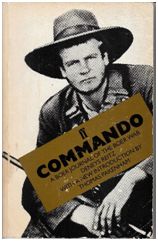
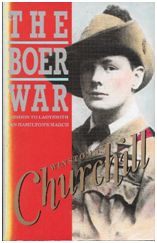
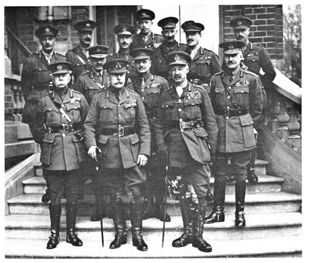
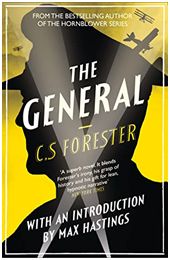
No warrior tribe in history has received such mockery and contempt from posterity as have been heaped upon Britain’s commanders of the First World War. They are deemed to have presided over unparalleled carnage with a callousness matched only by their incompetence. They are perceived as the high priests who dispatched a generation to death, their dreadful achievement memorialised for eternity by such bards as Siegfried Sassoon:
When we met him last week on our way to the line.
Now the soldiers he smiled at are most of ‘em dead,
And we’re cursing his staff for incompetent swine.
‘He’s a cheery old card,’ grunted Harry to Jack,
As they slogged up to Arras with rifle and pack.
But he did for them both with his plan of attack.
Seems to verge closely on the conventional caricature of the Army major, peppery, red-faced, liable under provocation to gobble like a turkey cock, hide-bound in his ideas and conventional to his way of thought, and it is no more accurate than any other caricature. It ignores all the goodqualities which were present at the same time. He was the soul of honour, he could be guilty of no meanness, even boggling at those which convention permits.
He presents to me in those red years the same mental picture as a great surgeon before the days of anaesthetics, versed in every detail of such science as was known to him; sure of himself, steady of poise, knife in hand, intent upon the operation; entirely removed in his professional capacity from the agony of the patient, the anguish of relations, or the doctrines of rival schools, the devices of quacks, or the first fruits of new learning. He would operate without excitement, or he would depart without being affronted, and if the patient died, he would not reproach himself.
I’d live with scarlet majors at the base,
And speed glum heroes up the line to death
You’d see me with my puffy petulant face,
Guzzling and gulping in the best hotel,
Reading the Roll of Honour, ‘poor young chap’.
I’d say – ‘I used to knew his father well;
yes, we’ve lost heavily in this last scrap’.
And when the war is done and youth stone dead,
I’d toddle safely home and die – in bed.
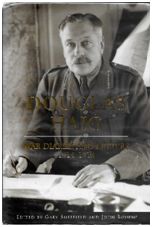
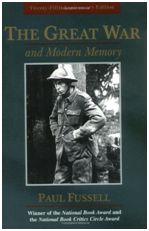
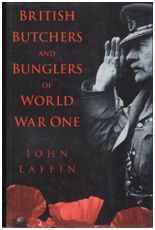
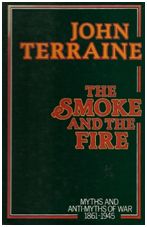
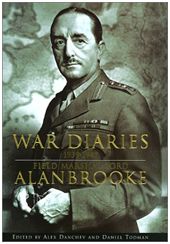
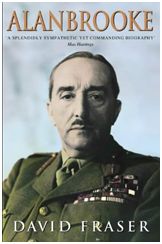

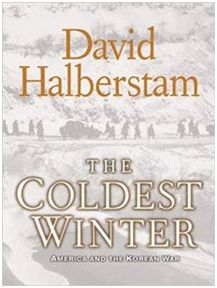
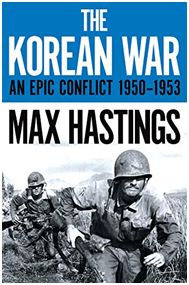
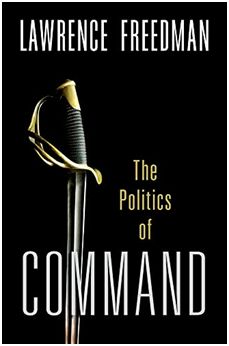
Howick, KZN
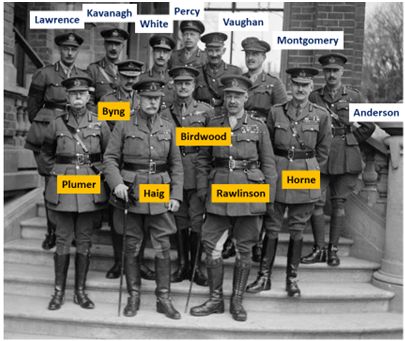
* NOTE*
Fast mirror and backup site BOOKMARK
FOR REFERENCE Main
site * NOTE*